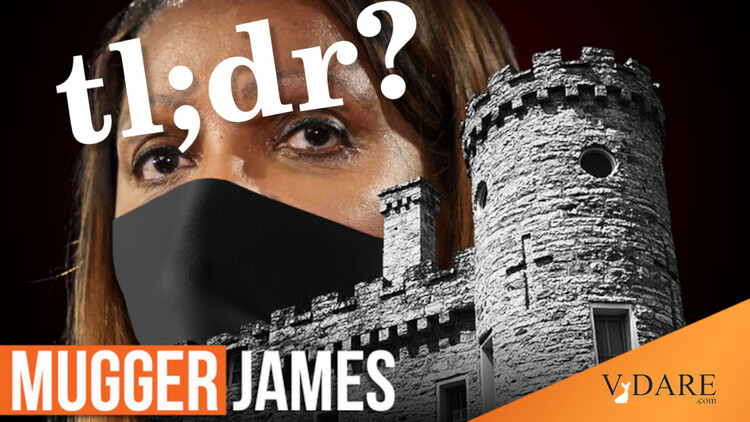From Politico:
GOP learning wrong lessons from Trump win, Republicans fearWhereas the GOP’s wisemen are still sure that if they’d only passed amnesty, then Univision would have given the GOP great coverage with Hispanics when Jeb ran against Hillary, because who owns Univision, anyway? Haim Saban? Who is that?Republican strategists say Trump’s intense reliance on white voters is not a long-term model for success.
By KATIE GLUECK 11/17/16 05:06 AM EST
Only about 55 percent of Hillary Clinton’s voters were white. That dynamic is not sustainable down the road or for other Republicans, some GOP operatives fret.
Republican operatives spent four years warning that the party needed to diversify — or risk a blowout at the ballot box. Donald Trump spent the campaign trafficking in divisive racial rhetoric — and he won anyway.
Now, those who pushed for a more inclusive GOP fear that their party will absorb the wrong takeaways from Trump’s win, and that the momentum behind efforts to expand the Republican tent to include more minorities and young people has evaporated.
“I am very concerned we will take the wrong lessons from this,” said Whit Ayres, a veteran GOP pollster. “Trump showed Republicans could squeeze out one more presidential victory by appealing primarily to white voters, especially against a historically unpopular Democratic nominee. But counting on winning the Electoral College while losing the popular vote is not a strategy for long-term success in the new America.”And Asians.Trump’s coalition included people who spanned the wealth, education, gender and age spectrums, unified by one theme: the vast majority of them were white.
Trump beat Hillary Clinton with white women (with 53 percent support) as well as white men (with 63 percent support). He won white people of every age group, including millennial voters (he won 48 percent of white voters between the ages of 18 and 29 despite losing that demographic overall, 55 percent to 37 percent). He won college-educated white men, white voters without college degrees of both genders, and in some states, like North Carolina, he even won white women with college degrees — a demographic that was expected to serve as a bulwark for Clinton against Trump. And his success was not limited to working-class white voters: He also won voters making more than $100,000, exit polls show.
And this time around, despite the overall white share of the electorate dropping by 2 percentage points, that was enough for Trump. While whites made up roughly 70 percent of the national electorate, more than 85 percent of Trump’s voters were white. That was very helpful in the Midwest states he flipped: Iowa (90 percent white), Ohio (80 percent white), Pennsylvania (81 percent white) and Wisconsin (86 percent white). Michigan, where Trump is currently ahead, is 75 percent white.
By contrast, only about 55 percent of Clinton’s voters were white.
That dynamic is not sustainable down the road or for other Republicans, some GOP operatives fret, noting that the share of the white vote is consistently shrinking each cycle. But the motivation to address that problem, they fear, is gone, overtaken by reveling in last week’s victories.
“The demographics of the country are very clear, and this worked this time, but is it a long-term winning strategy, setting aside rightness or wrongness?” asked one veteran conservative who helped lead the Never Trump movement. “No. I can’t imagine that. So there’s going to have to be an adjustment in that. Sooner or later, the Republican Party, if it’s going to be viable, it has to be more inclusive.”
But, the source noted, “when you win, it’s hard to argue with that.”
After Mitt Romney’s bruising 2012 defeat, a group of Republican leaders fashioned the Growth and Opportunity Project, also known as the GOP “autopsy” report. It heavily emphasized comprehensive immigration reform and stressed the need for a more inclusive approach to minorities, especially Latino voters. Trump, in contrast, kicked off his 2016 presidential bid by referring to undocumented Mexican immigrants as “rapists” and floating the idea of a deportation force, something he has more recently de-emphasized.
And for Trump, a larger-than-life personality who benefited from being a radical “change” candidate with a unique appeal to white working-class voters, it still worked. In fact, in an election when Clinton struggled to turn out her base, he ended up slightly overperforming Romney among Latino and African-American voters.
But other candidates can’t get away with Trump’s hard-line approach, Republicans warn — even as they fear that the wind has gone out of the sails for a reassessment of how the GOP can improve its standing with minorities.Virtually nobody in politics has put together yet that the Bush getting 40% of the Latino vote in 2004, up from 35% in 2000, was due to Bush’s Housing Bubble. In 2002, Bush started denouncing traditional credit standards as unfair to minorities. Aggressive lenders like Angelo Mozilo quickly picked up on the message that federal regulators were being told by their boss to allow riskier mortgages. This worked pretty well in 2004, setting off a sizable but not yet outrageous rise in housing prices, especially in heavily Hispanic regions. The strong housing market provided a lot of construction and mortgage broker jobs to Hispanics and the teaser rate mortgages gave them some extra cashflow for awhile.“I do worry about that,” said Ari Fleischer, a White House press secretary under George W. Bush and author of the Growth and Opportunity Project, when asked about concerns that the lessons of the autopsy report have faded. “Donald Trump is a unique phenomenon who had the ability to change the math. But the demographic math changing our country will continue regardless. And therefore, the ability to appeal to nonwhite voters remains essential to Republican success.”
While Trump did slightly better than Romney with Latinos and African-Americans — 29 percent of the Latino vote vs. 27 percent; 8 percent of the black vote vs. 6 percent, according to exit polls — his numbers were still underwater, in an electorate that grows increasingly less white every year. And heavily Latino states like Arizona and Texas were ultimately significantly closer than in 2012.
But Trump’s overwhelmingly white coalition pulled him across the finish line, and the fact that he won — and that Republicans up and down the ballot won — removes the motivation for deep thinking about how to improve outreach going forward, some operatives warn.
“Of course” it’s harder to focus on those questions after a victory, Ayres said, “That doesn’t mean it’s any less important. Look at turnout. [White] turnout is down, yet again, by 2 points exactly. And that’s not going to stop. That’s going to keep going every election.”
Alex Smith, chairwoman of the College Republican National Committee, led a millennial-minded autopsy report of her own after the 2012 election. It found that undecided young voters associated the party, at the time, with words like “closed-minded, racist, rigid, old-fashioned.” So she and her committee spent years trying to help the party rebuild its brand among young people.
But there’s still work to do, she acknowledged in an interview this week, even as the rest of the party is celebrating its victories up and down the ballot.
Trump showed no improvement with young voters overall: Like Romney, he landed 37 percent support from that demographic, according to exit polls, even though Clinton also did worse with those voters than Barack Obama did.
“In some ways, the short-term high of the victory might paper over some longer-term challenges that we’ll have with millennials,” said Smith, who disavowed Trump after the release of the “Access Hollywood” tape, though she now speaks positively about the new administration.
Pointing to states like Wisconsin, where Trump had better margins among millennials, she continued, “On the one hand, we should be excited about the inroads we’ve made with millennials, backstopping from losing another national election. But those margins are still not sustainable on a long-term basis.”
She called on the new GOP-controlled government to make more efforts to communicate with young voters about why conservative principles, when put into practice, can benefit millennials — “the most diverse generation of millennials in the country’s history.”
“That conversation needs to be happening actively with young people, with women, with minorities … [who] make up such a broad part of that coalition,” she said. “That’s where we have our biggest challenges and greatest opportunities for growth.”
Republican operatives note that senators like Marco Rubio and Rob Portman were successful in landing more diverse coalitions and expressed hope that other candidates would follow their examples — rather than relying too much on replicating Trump’s.
Glenn McCall, another co-author of the GOP autopsy report and the South Carolina Republican National Committeeman, said the RNC deserves credit for organizing in communities of color and said that an improvement with African-American and Latino voters is still an improvement — even if the margin is small.
“It’s going to take a few cycles, but we keep increasing in the voters among people of color,” he said (even though the high-water mark for the GOP’s success with Latinos was George W. Bush in 2004).
But nobody remembered to turn off these policies after the election of 2004. Late in 2004, Fannie Mae, which had been largely sidelined by an accounting scandal, decided to jump back in heavily, making an agreement with Mozilo to fund crappier loans he’d made. Mozilo in turn announced in January 2005 that Countrywide would lend one … trillion … dollars to minorities and lower income households by 2010 and an exuberant housing market turned insane, until it started to blow up in 2007, eventually becoming the central event setting off the global crash of 2008.
I recount all this apparently forgotten history to explain why McCain, who was at least as enthusiastic as Bush about immigration, got only 31% of the Hispanic vote in 2008: the GOP picked up five points among Hispanics by inflating the housing bubble in 2004, but then lost nine when it burst in 2008.
And certainly, Trump improved his party’s standing with white working-class voters, some of whom had previously supported Democrats but rallied to his populist message. But that’s not enough to sustain a coalition going forward, veteran Republicans say.What the GOP needs is to win back some upscale whites turned off by Trump’s tackiness. The single best way to do that is for Trump to be a good President.
There are other ways as well, such as publicizing the work of independent-minded intellectuals.











